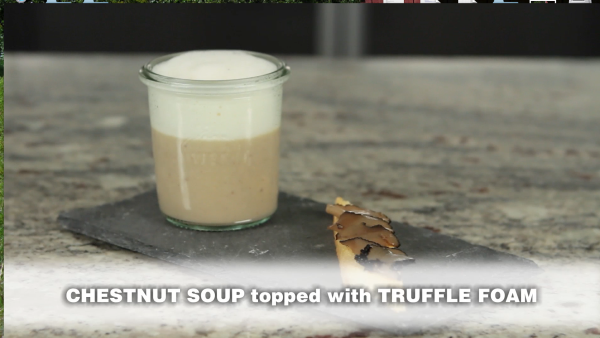Cuisine Tech Lecithin Powder To Foam The World
- By Jillian Mead
- May 22, 2013
Lecithin, first identified by French chemist and pharmacist Theodore Gobley in 1846, is a naturally occurring substance widely distributed in animal tissues and some higher plants, consisting of phospholipids linked to choline. Lecithin is a natural lipid found in all living cells and plays a crucial role in the human body, keeping cell walls from hardening and comprising approximately 30% of the brains weight and 66% of liver fat.
The richest natural sources of lecithin are foods high in fat, such as egg yolks. In fact, the name is derived from lekithos, the Greek word for egg yolk. Other animal sources include liver, fish, milk, eggs, chicken, and beef. Seeds, peanuts, wheat germ, olives, avocadoes, and cabbage are good plant sources.

Lecithin is also commercially produced. Commercial lecithin, most commonly derived as a by-product of soybean flour and soybean oil production, is purified and non-allergenic for people with soybean allergies. Lecithin can also be obtained from sunflowers, corn, rapeseed, and peanuts.
Chef Vincent Jaoura uses lecithin powder to emulsify the truffle foam that tops his chestnut soup. His video demonstration is below, and a link to the recipe follows, too.
Lecithin is used in the preparation of many food products such as baked goods, chocolate, salad dressing, ice cream, and mayonnaise. Humans can completely metabolize lecithin so it is well tolerated when ingested. Its found in so many prepared foods because of its ability to act as an emulsification agent. Emulsifiers help bind oil and water together and keep fats from separating, so its added to a wide variety of creamy foods with a high oil content. For example, lecithin can keep a candy bar held together by keeping the cocoa solids and the cocoa butter attached to each other and stable. Without it, chocolate just wouldnt have that creamy, velvety texture.
Besides emulsification, lecithin is useful in its capacity to add moisture to and preserve foods, give products a longer shelf life, and as a replacement ingredient to reduce fat content and/or replace eggs. It is often used in baked goods to improve doughs ability to rise and keep it from sticking. Lecithin is also a surfactant, which means it allows liquids to spread out and be absorbed more quickly. Thats another reason why its added to cake and other pastry mixesliquids mix in more easily, resulting in a smoother batter with fewer clumps.
Lecithin is also popular in molecular gastronomy, as it allows chefs to create foams out of almost any flavorful liquid.

